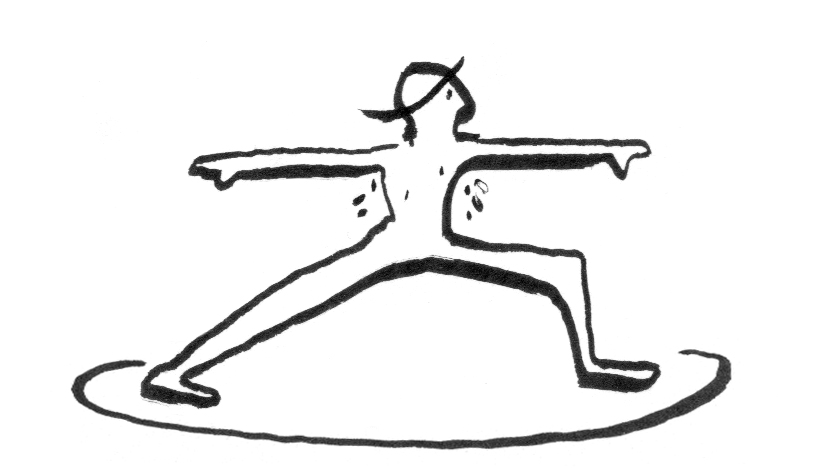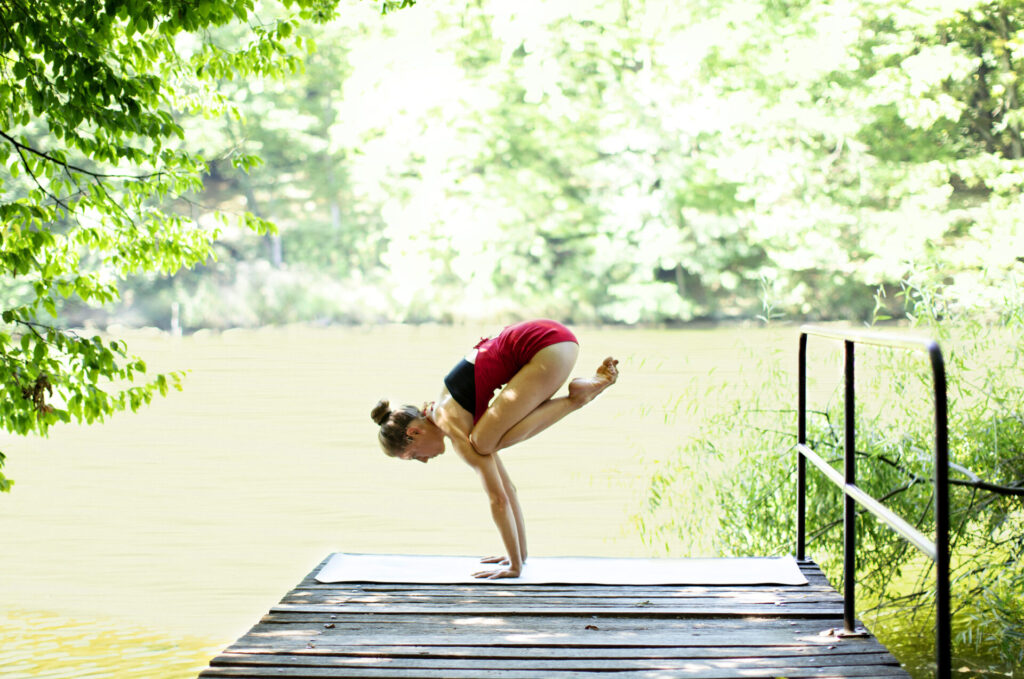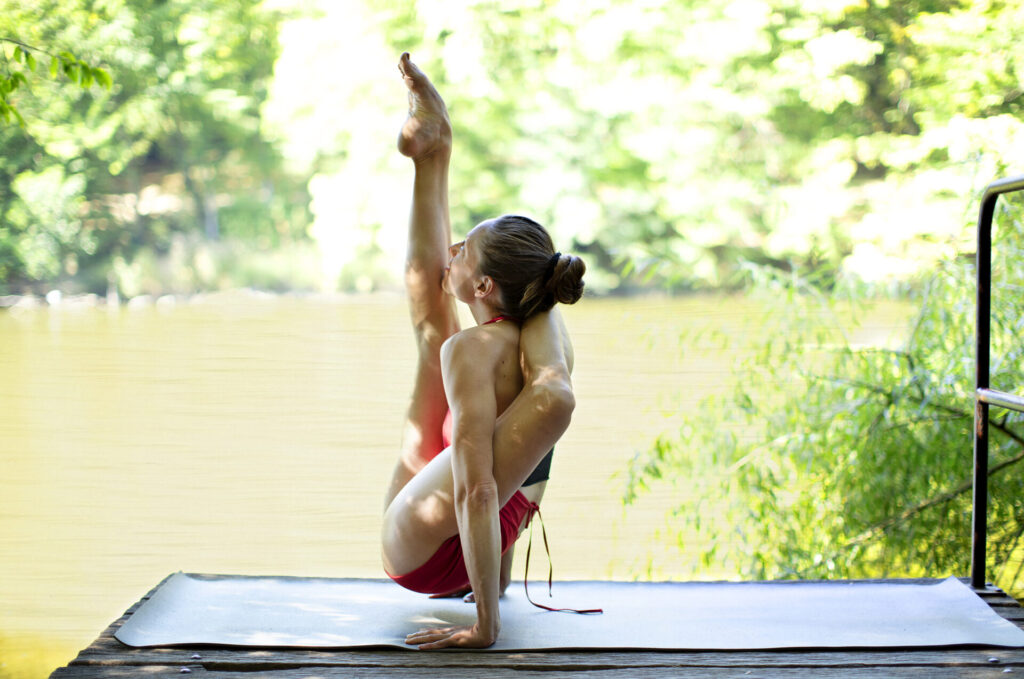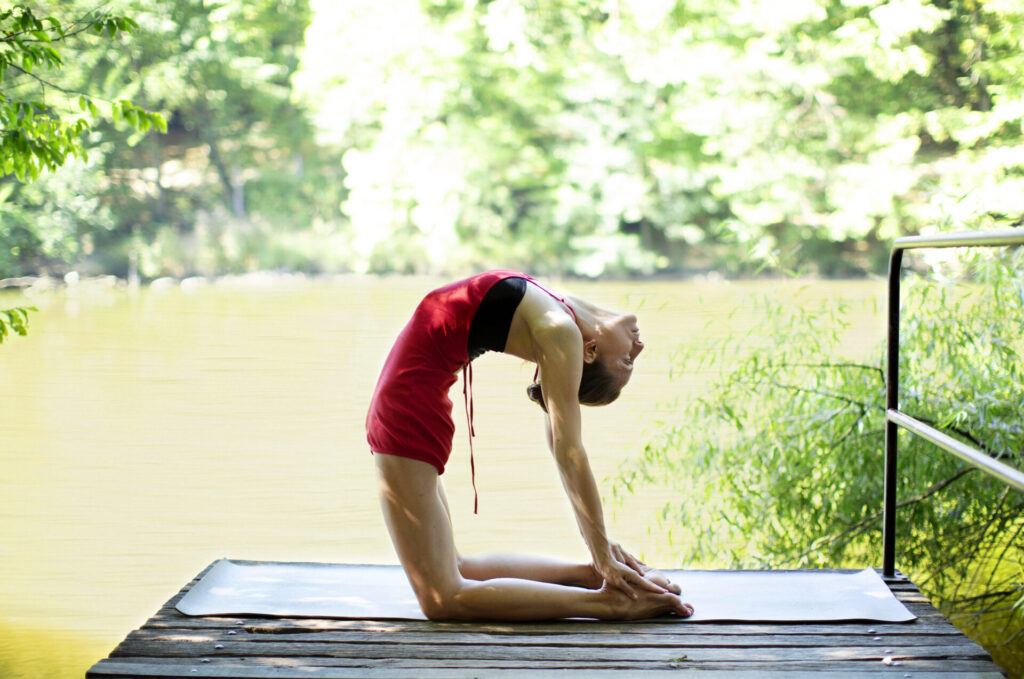Ashtanga yoga

Dinamic yoga style
Homage to a yoga style with many benefits
Ashtanga Vinyasa Yoga is a dynamic style of yoga that is based on matching the breath with a series of positions and movements through a specific asana sequence. Ashtanga yoga was developed by the famous teacher Sri K. Pattabhi Jois who brought this system of yoga to the modern world. Breathing and movement of the continuous asana performance intensively warms the body, which stimulates circulation, digestion, cleans the blood, increases lung capacity…
Sweating promotes detoxification of the body and if the method is consistently followed, the body becomes strong and healthy.
We simultaneously connect body positions – asanas and activation of isolated muscle groups – bandha together with altered longer breath with a hum in the throat – ujjayi breathing and the direction of focus – drishti. Asanas clean, strengthen and give flexibility to the body, and bandhas direct strength and energy. Proper breathing with an equal ratio of inhalation and exhalation balances the nervous system. The direction of focus develops concentration and calms the mind. These three aspects together are called Trishtana, it unites the intention of the mind with the control of the body and breath and it is perfected through regular practice. Ashtanga yoga is traditionally practiced in the so-called Ashtanga Mysore classes which are not guided, the teacher is present, gives personal instructions, asanas and assistance. The idea is that all yogis practice together, but everyone does part of the series or the amount of asanas they go through. The teacher should motivate the participants to progress and bring them closer to the accomplishing a certain position, since the rule is that one cannot continue in the sequence if the previous position is not mastered. This gives complete trust in the teacher and in the practice.
There are several series of this yoga practice. The primary series works on purifying the whole body, the second series works on purifying the nervous system, and the remaining four advanced series improve details, make the body lighter, stronger, and the mind more flexible.
Check out some of the topics in the videos below or look for more Ashtanga yoga classes on my YouTube channel.



My attitude towards Ashtanga yoga
The specialty of Ashtanga yoga is in the choreography that is repeated and perfected day by day (each series of Ashtanga yoga is its own sequence of positions). This allows us not to think about the asanas but to follow the movements that due to daily repetition have already become meditation. The significance of this style are also numerous rules that are followed without question in the traditional approach.
Ashtanga yoga is a traditional style of yoga and for those who can take it without question, everything is clear.
It didn’t work for me. After many years of dedicated practice, learning from more experienced teachers, accepting the style as it is and giving myself completely, I realised that following these rules of Ashtanga I was having an unhealthy attitude towards myself. Practice develops a certain “mindset” that has become a prison for me. I was conditioned by the thoughts that I must do the practice every day and I noticed how I value myself by it: if I did yoga it’s good, but if I didn’t it’s not good and I would remain restless all day. It took me time to admit to myself that the practice is anyway too strenuous and that I often feel exhausted the whole day after it.
Ashtanaga yoga became like a parallel relationship and support without which I almost didn’t know who I was.
The most difficult was this latent but present comparison between practitioners, listing of achieved asanas and advice on how to achieve them. It’s all human psychology and I understand that not everyone has to experience the practice in this way, but I did and over time I realised that it does not develop healthy habits of mind.
Those ten years were nevertheless a very beautiful period, rich in intense physical experiences and pushing my limits. I created strength and stability in the depth of the tissues and very good foundation for health and vitality. A period of deep breathing, opening the chest, expanding the boundaries of my body, wonderful acquaintances and yoga related trips.
After all I took Ashtanga yoga as a basis for teaching because it is a set of well-known rules within which we can work out a target topic.
Now while teaching I emphasise that the practitioners notice their current state and respect what is present in their body, not having a goal in the mind but to develop mindfulness. I am explaining what we are doing so that everybody understands where to put their attention. The classes I lead usually deal with a specific topic and that’s why we have a very different effect of the practice from class to class. You could say that I teach the Therapeutic Mindful Ashtanga yoga practice with the intention of working on some part of the body or a problem, all immersed in meditation.
4 strane pluća
Unutarnji kotlić
Istezanje nogu
Subscribe to Tena Yoga youtube channel for free yoga videos and share yoga with everyone!



